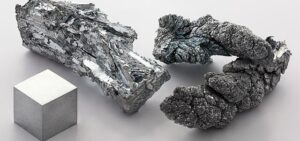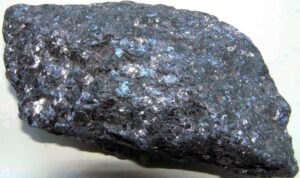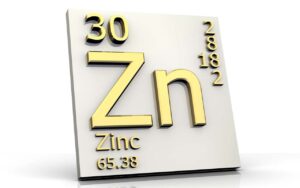
Imports of zinc and zinc products in January-November 2025 fell by 11.3% to $48.590 million. In November, imports amounted to $3.070 million.
Zinc exports for the 11 months of 2025 reached $1.166 million, in November — $22 thousand, while in January-November 2024 it was $463 thousand.
In 2024, imports of zinc and zinc products increased by 27.5% to $58.610 million, while exports amounted to $563 thousand.
In 2023, the country increased imports of zinc and zinc products to $45.966 million (+18.8%), while exports fell to $130,000 compared to $1.331 million in 2022.
Pure metallic zinc is used to recover precious metals, protect steel from corrosion, and for other purposes.

Imports of zinc and zinc products to Ukraine in January-October 2025 decreased by 8% to $45.52 million, while exports tripled to $1.14 million.
In October, imports amounted to $4.3 million, exports — $0.19 million.
In 2024, zinc imports increased by 27.5% to $58.61 million, and exports increased 3.4 times to $0.56 million.
Pure metallic zinc is used to recover precious metals, protect steel from corrosion, and for other purposes.

Global lead and zinc production will exceed demand in 2025 and 2026, according to forecasts by the International Lead and Zinc Study Group (ILZSG).
Refined lead output is expected to increase by 2% this year to 13.34 million tons. This will mainly be driven by increased production in Canada, Germany, India, Mexico, Sweden, and Brazil, while Kazakhstan, the UK, and the US are expected to see a decline in output.
In 2026, global production will grow by 1% to 13.47 million tons due to increased output in Brazil and India, as well as a recovery in Kazakhstan. At the same time, experts predict a decline in China and the UK.
Global lead consumption this year may increase by 1.8% to 13.25 million tons, including 1.8% in Europe, 6.6% in the US, and 0.9% in China. Next year, global demand for the metal is expected to increase by 0.9% to 13.37 million tons, with China seeing a 1.7% decline.
Thus, in 2025, the global market will see a lead surplus of about 91,000 tons, and next year the surplus will increase to 102,000 tons, according to the group’s report.
Global refined zinc production is expected to increase by 2.7% to 13.8 million tons this year.
In particular, production in China will grow by 6.2%. Output is also expected to grow in Norway, where Boliden completed the expansion of the Odda plant’s production capacity by 150,000 tons per year in March. Meanwhile, zinc output is forecast to decline in Italy and Japan due to the closure of Glencore and Toho Zinc plants in these countries, as well as in Brazil, Canada, Mexico, and South Korea.
In 2026, global zinc production will rise by 2.4% to 14.13 million tons. An increase is expected in Brazil, Canada, Norway, and China.
Metal consumption this year may grow by 1.1% to 13.71 million tons. In particular, an increase of 1.3% is expected in China and 0.7% in Europe. Experts also suggest the possibility of an increase in demand in India, Japan, Saudi Arabia, Thailand, and Vietnam, as well as a decline in Brazil and South Korea.
In 2026, global demand for zinc will increase by 1% to 13.86 million tons. In particular, it will rise by 0.1% in China, with increases also forecast in Europe, Brazil, India, and the US.
The global zinc surplus in 2025 is expected to be 85,000 tons, and next year – 271,000 tons.
ILZSG, established by the UN in 1959, provides information on the supply and demand for zinc and lead and conducts research on the situation in the global markets for these metals. The group’s members include Australia, Belgium, Brazil, Bulgaria, China, Finland, France, Germany, India, Ireland, Italy, Japan, South Korea, Mexico, Morocco, Namibia, Norway, Peru, Poland, Portugal, Russia, Serbia, Sweden, Turkey, and the United States, as well as the European Union. These countries account for more than 85% of global lead and zinc production and consumption.
DEMAND, LEAD, PRODUCTION, zinc

Zinc prices are climbing on worries about a global shortage of the metal, bouncing back from earlier losses and hitting their highest level since last December.
Zinc rose 0.6% to $3,026 per ton during trading in London on Tuesday.
According to the International Lead and Zinc Study Group (ILZSG), zinc production in the first half of 2025 increased by 6.3% year-on-year.
However, due to problems at processing plants, refined zinc output fell by more than 2%.
As a result, zinc stocks on the London Metal Exchange fell to 30,000 tons, although at the beginning of the year they reached 171,500 tons, according to Trading Economics.

In January-August 2025, imports of zinc and zinc products decreased by 3% to $37.093 million (in August – $3.889 million).
Zinc exports during this period increased to $888,000, which is more than four times higher than in the same period of 2024 ($201,000).
Pure zinc metal is used to recover precious metals, protect steel from corrosion, and for other purposes.

The volume of zinc and zinc products supplied to Ukraine in January-July 2025 decreased by 0.5% to $33.204 million (in July – $7.452 million). Zinc exports for the first seven months of the year reached $707,000 (in July – $87,000), while in January-July 2024 they amounted to $120,000.
Pure metallic zinc is used to recover precious metals, protect steel from corrosion, and for other purposes.